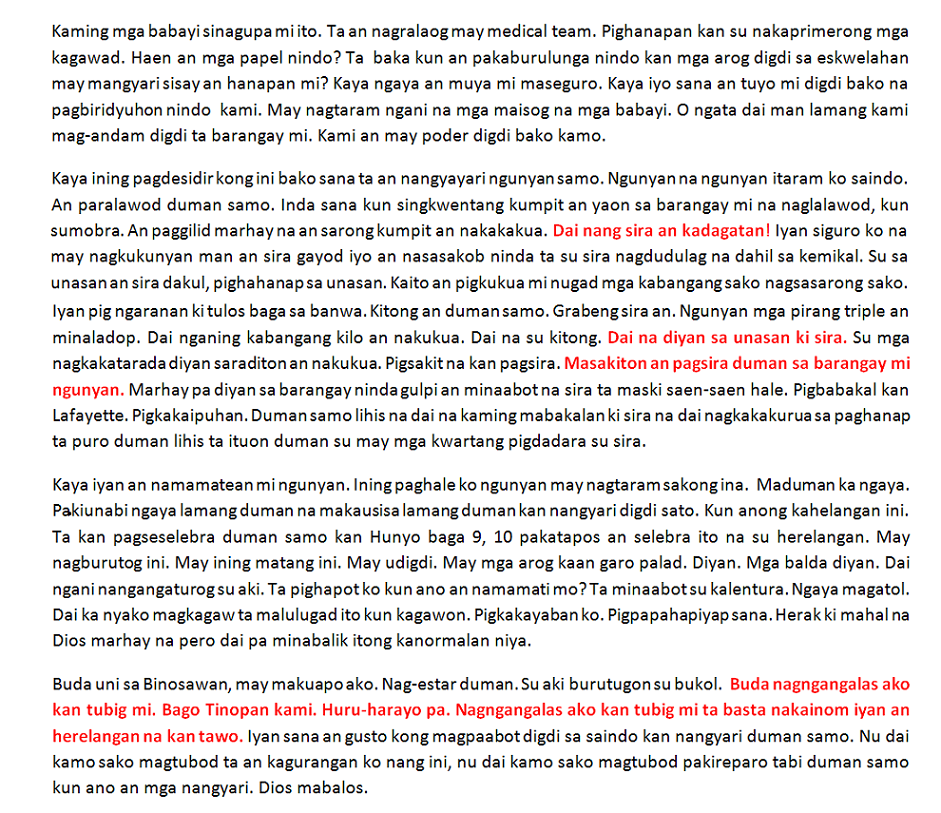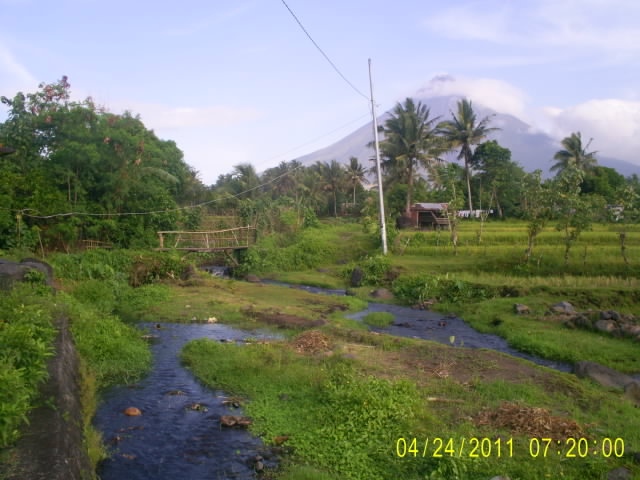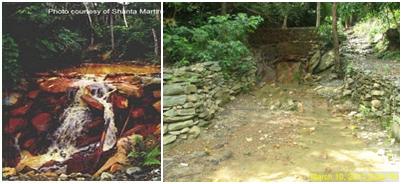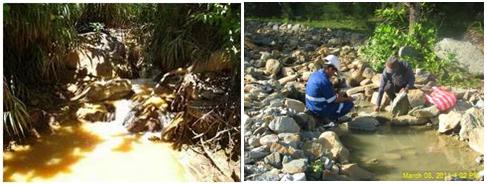We will become a "mining country" in a couple of years. And this is supposed to be a good thing? And if you abide by DENR propaganda, the environmentalists are the bad guys. Here's something interesting: can you find the words "sustainable" and "protect" (or its various forms) in this article?
By Jonathan L. Mayuga
Correspondent
Business Mirror / Economy
Mon March 10, 2008
THE Philippines is inching closer toward achieving the status of a “mining country” as mining investments continue to pour in, despite the strong opposition to the government’s mining-revitalization program by various sectors.
Total investment in the country’s mining industry had already reached a total of $1.4 billion as of last month and is projected to reach $1.8 billion by the end of the year with seven more projects advancing to production stage, Environment Secretary Lito Atienza said.
The total mining investments covering the period 2004-07 came from the exploration, mining operation, and construction and development activities of some 63 mining companies now doing mining business in the country.
The biggest slice of the investments amounting to $304.59 million came from the Palawan HPAL Nickel Project (Line 1) being operated by Coral Bay Mining Corp. (CBMC) in Rio Tuba, Bataraza in Palawan.
The company’s expansion project poured in an additional $230 million in 2007. CBMC is a Filipino-Japanese joint venture involved in nickel mining.
The second-largest investment, amounting to $230 million, came from Palawan HPAL Nickel Project (Line 2), an expansion project also being operated by CBMC in Bataraza, Palawan, while the third-largest mining investment during the period amounting to $169 million came from Carmen (Toledo) Copper Project, operated by Carmen Copper Corp., in Don Andres Soriano in Toledo City.
Atienza also said that since the start of the mining-revitalization program in 2004, some 6,500 new jobs have been generated by the industry and that an additional of more than 30,000 jobs is still projected to be generated between this year and 2010.
“The government’s revitalization program remains on track and with seven more projects coming on stream. The year 2008 will be a banner for the minerals industry,” Atienza said.
However, antimining groups have not given up the fight against mining operations in the country. Early this month another round of petition was filed before the Supreme Court (SC) questioning the constitutionality of the Philippine Mining Act.
Atienza, however, merely shrugged off the move, confident that the Supreme Court, which has already affirmed the legality of the Philippine Mining Act, will not reverse its own ruling.
Atienza said with seven more projects advancing into production this year, total investment could well reach $1.8 billion.
He identified the seven projects as Carmen Copper Project, Didipio Copper-Gold Project, second line of the Palawan Nickel Project, Masbate Gold Projects of Filipino-Australian joint venture, Filminera Resources Corp., Iligan and Manticao Ferronickel Smelter Plants of Platinum Group Mining Corp. and another Filipino-Australian consortium Philsaga Gold Project of Philsaga Mining Corp.
Atienza said that total mining investments coming from the seven projects could reach $300 million.
“With all these projects going into production, we expect our mineral output to increase to a level which would turn the Philippines into a mining country by 2009,” Atienza said.
Under the World Bank standards, a country with mining exports reaching 6 percent of its total exports is considered a “mining country.”
The DENR chief also said the country’s metallic-mineral production, which was estimated at P95 billion last year, could possibly hit over P120 billion next year, a dramatic increase that could also lift the mining industry’s exports contribution to 6 percent of the total Philippine exports.
“We are also confident that by 2010-11, we already have a $10-billion industry that can sustainably generate income to our government and help provide social benefits down to the poorest of the poor in the countryside,” Atienza said.
Among the 63 mining projects currently setting their investments in the country’s mining industry, 10 are operating, seven are in the construction and development stage, nine are under feasibility and financing stage, another nine in advance exploration stage, five projects under the second-tier projects, which are highly potential projects that are still undergoing funding negotiations, and 23 priority exploration projects
Operating mining projects include Palawan Nickel Project in Rio Tuba, Bataraza in Palawan; Rapu-Rapu Polymetallic Project on Rapu-Rapu Island in Albay; Canatuan Silver-Gold Project in Siocon, Zamboanga del Norte; Sto. Tomas II Copper Expansion Project in Tuba, Benguet; Teresa Gold Project in Mankayan, Benguet; Berong Nickel Project in Berong, Quezon in Palawan; Masara Gold Project in Maco, Compostela Valley; SIRC Nickel Project in Surigao del Norte, CTP Nickel Project, and Pasar Copper Smelter Project in Isabel, Leyte.
Exploration mining projects include the following: Acoje PGE/Nickel Project in Candelaria, Zambales; Colet Copper-Gold Project in Negros Occidental; Agata Project (copper-gold-nickel) in Agusan del Norte; Runruno Gold Project in Nueva Vizcaya; Bayugo Copper-Gold Project in Surigao del Norte; Pujada Nickel Project in Davao Oriental; Macro Asia Palawan Project in Palawan; Archangel Gold Project in Batangas; Batoto Gold Project in New Bataan, Compostela Valley.
Celestial Nickel Project in Brookes Point, Palawan; Del Gallego Gold Project in Camarines Sur; Hixbar Copper-Gold Project in Rapu-Rapu in Albay; Lobo Gold Project in Lobo, Bantangas; Nalesbitan Gold Project in Labo, Camarines Norte; Panag Gold Project in Compostela Valley Province; Tagpura Copper Project in New Bataan, Compostela Valley; Tapian San Francisco Project in Surigao del Norte; Vista Buena Project in Surigao del Norte; and Capcapo Mining Project in Abra.
































































































































No comments:
Post a Comment